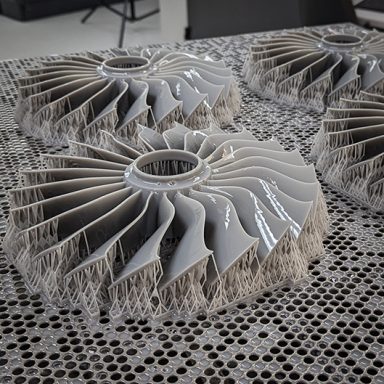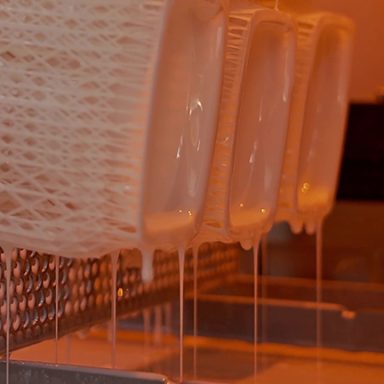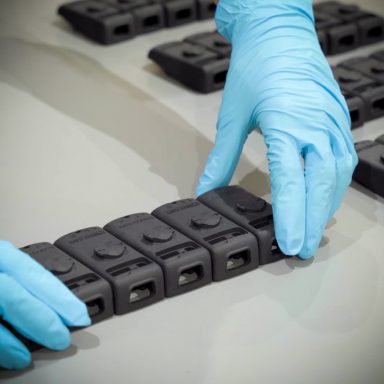Drone Production
September 25, 2020
Case Study
Aldora Avionics, a company that has sought to demonstrate its zeal in pursuing excellence, produce highly customisable drones for the defence and aerospace industries. The development of a fully autonomous drone mainly consisted of CNC-cut carbon fibre with only the gimbal part being 3D printed.
After the first initial prototype testing, the strength of the MJF 3D printed parts came as a surprise. With this knowledge, they decided to adjust the design by consolidating the number of parts and 3D printing the entire drone body.
The number of components was reduced by a factor of almost 6 and the time to assemble the drone went from two weeks to two days. The total weight of the drone was also reduced by 20%. This was partially attributed to the 3D-printed lattice structures within the wings. Instead of 3D printing a solid block of plastic or metal, engineers can use overlapping, interlocking patterns that are partially hollow. When these lattices are designed properly, they can greatly improve the mechanical properties of a part, making it lighter and stronger.
A collaborative production relationship
Because of the lower production costs mentioned above, working with an additive manufacturing partner made it easy for Aldore to take advantage of on-demand batch production and reduce inventory and storage costs. It also allowed minor changes and improvements to be made without impacting lead times.
Key Advantages:
- Reduction in number of components
- Reduction in assembly time frame
- Shorter lead times
- 20% weight reduction
- Parts contained equal strength in the X, Y and Z dimension


